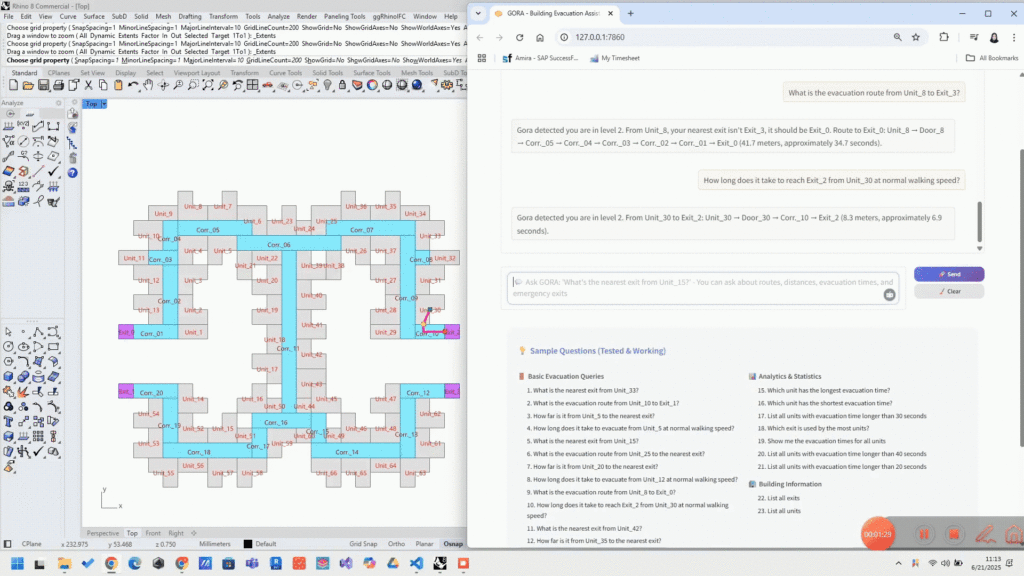
GORA Bot—a real-time evacuation assistant that uses spatial logic and AI to guide people between composure and panic during emergencies.
The Team

Introduction
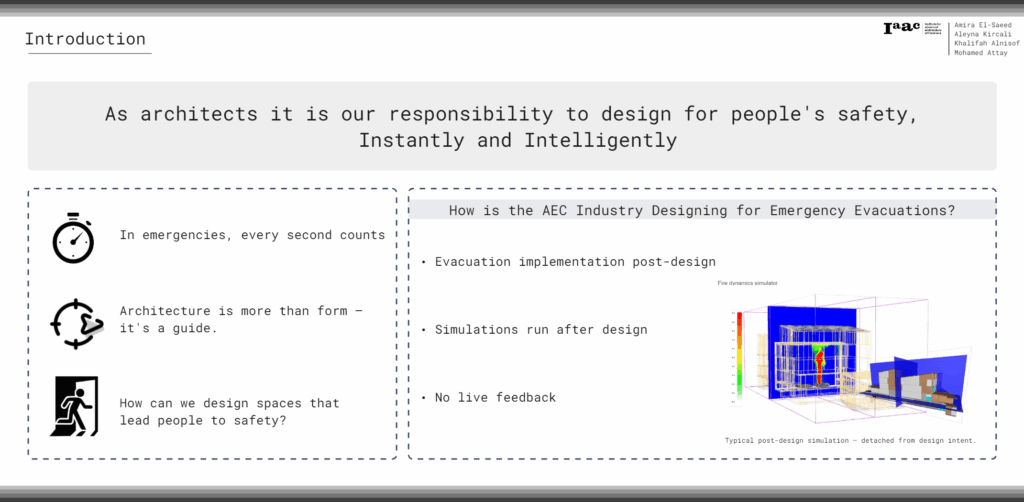
In emergencies, every second counts, but evacuation planning is often delayed until after design, without real-time feedback. To ensure safety, architects must integrate evacuation logic directly into the design process.
State Of Design

We model buildings as graphs to enable AI-driven evaluation of key evacuation metrics such as escape time, bottlenecks, and exit capacity. The system flags issues in real time, delivering actionable feedback for safer design decisions.
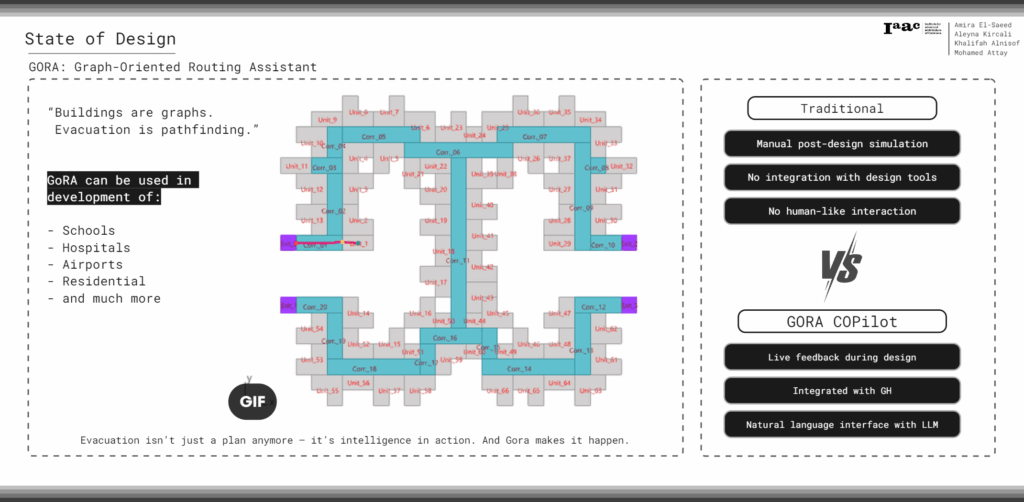
By treating buildings as graph networks, GORA calculates evacuation routes and safety metrics dynamically as the design evolves. Integrated with Grasshopper and a natural language interface, it provides instant, in-context feedback unlike traditional post-design simulations.
Workflow
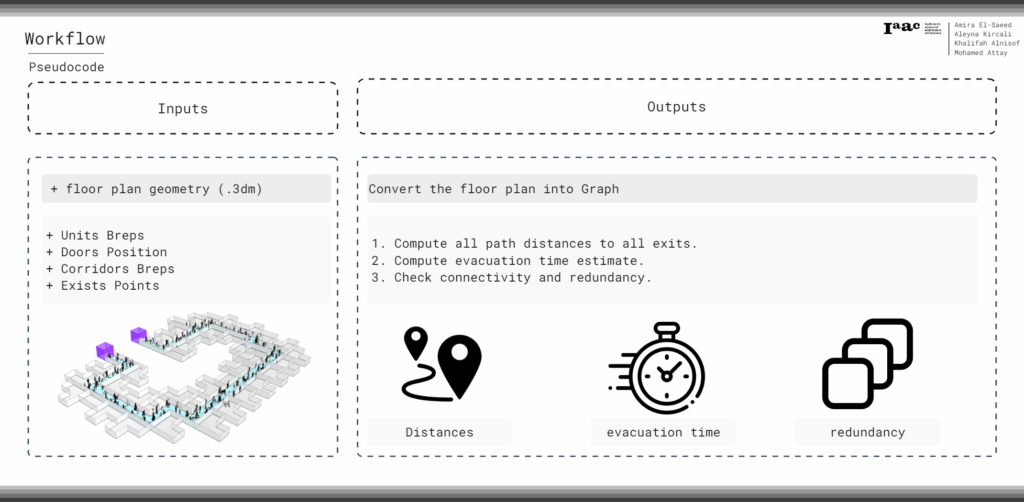
We convert the floor plan into a graph using spatial elements like units, corridors, doors, and exits as inputs. This enables us to calculate all path distances, estimate evacuation times, and analyze network connectivity and redundancy.

The workflow begins with geometry setup, followed by graph construction, query classification, and prediction using Graph Neural Networks. The copilot module then provides real-time feedback based on user input.

The Journey

We abstract the building into a graph, where Spaces become nodes and possible movement paths become edges. Each node and edge contains spatial data, allowing the system to reason about connectivity and plan optimal evacuation routes.
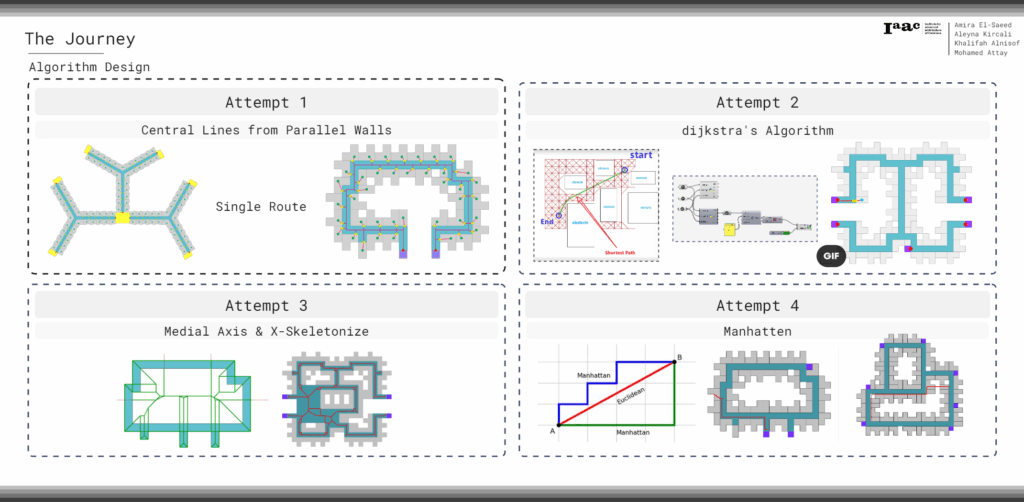
We tested multiple algorithms: central lines worked for simple layouts, Dijkstra’s was accurate but slow, skeletonization created redundant paths, and Manhattan routing struggled with real-world corridors and exits. Each approach revealed specific limitations for real-time evacuation modeling.

The breakthrough was shifting to an edge-based maze logic, The key idea was to use the walls themselves to create paths, like in a maze. This approach made our system strong and flexible, so it can always find the best evacuation routes for any building layout.

Once the algorithm is defined, we convert the spatial data into a JSON graph structure. This is visualized and mapped as a NetworkX graph, showing how units, doors, corridors, and exits connect.
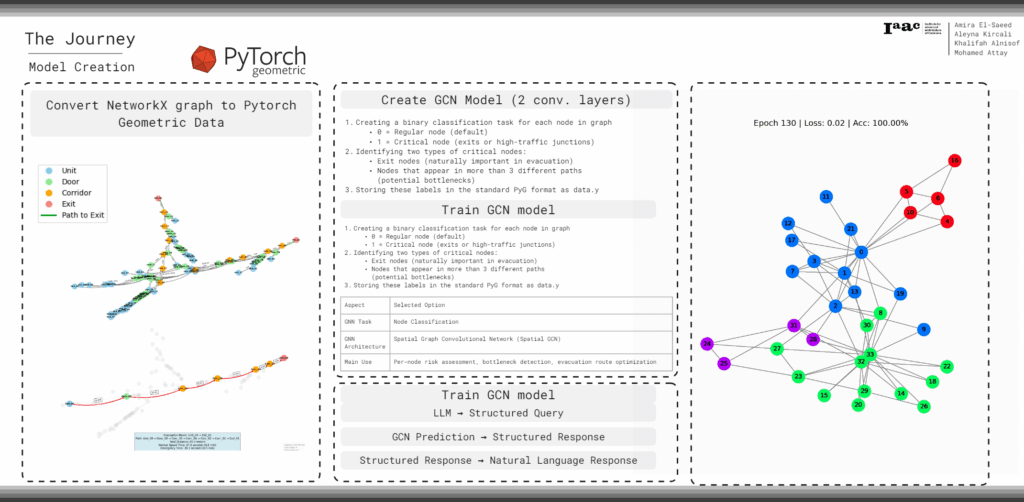
We then convert the NetworkX graph to PyTorch Geometric data, allowing deep learning with Graph Convolutional Networks to identify key nodes and optimize evacuation routes. This enables real-time, route-aware evacuation guidance based on user queries.
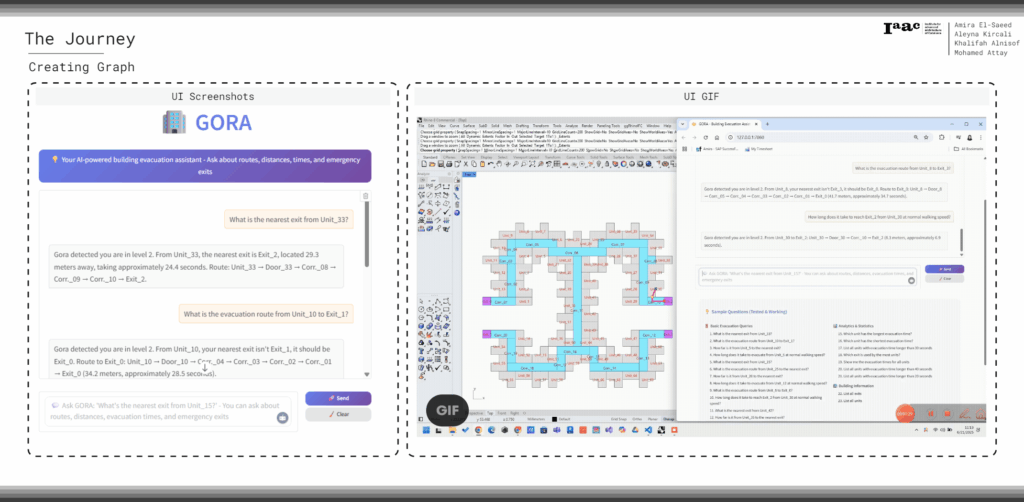
GORA interface allows users to ask evacuation questions and receive instant responses with routes, distances, and times. All outputs are powered by our graph-based backend and real-time AI analysis.
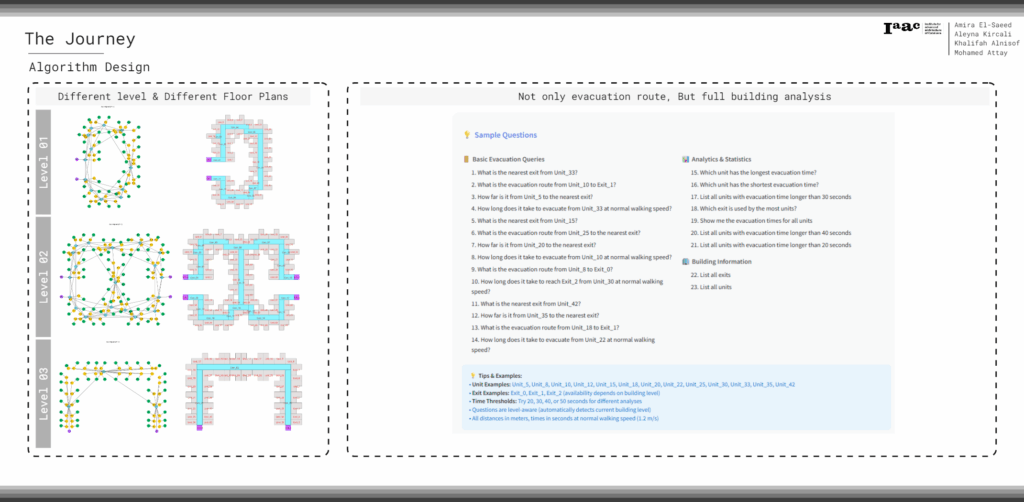
The system works across different floors and layouts, supporting both specific evacuation routes and comprehensive building analysis. Users can access evacuation stats, time-based reports, and analytics for the entire building.
GORA Co-Pilot in Action
